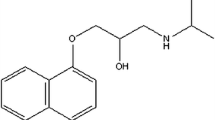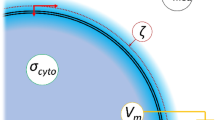Abstract.
In this study, electrorotation spectra of individual cells (that is, frequency dependence of cell rotation speed) have been proved to yield information not only about the passive electric properties of cell constituents, but also about the presence of mobile charges within the plasma membrane being part of ion carrier transport systems. Experiments on human erythrocytes pretreated with the lipophilic anion dipicrylamine (DPA) gave convincing evidence that these artificial mobile charges adsorbed to the plasma membrane contributed significantly to the rotational spectrum at relatively low conductivity of the external medium (2–5 mS m−1). Theoretical integration of the mobile charge concept into the single-shell model (viewing the cell as a homogenous sphere surrounded by a membrane) led to a set of equations which predicted electrorotational behavior of DPA-treated cells in dependence on medium conductivity. The quantitative data on the partition and the transmembrane translocation rate of the DPA anion extracted from the experimental rotational spectra agreed well with the corresponding literature values.
Similar content being viewed by others
Author information
Authors and Affiliations
Additional information
Received: 14 February 1996/Revised: 29 May 1996
Rights and permissions
About this article
Cite this article
Sukhorukov, V., Zimmermann, U. Electrorotation of Erythrocytes Treated with Dipicrylamine: Mobile Charges within the Membrane Show their ``Signature'' in Rotational Spectra. J. Membrane Biol. 153, 161–169 (1996). https://doi.org/10.1007/s002329900119
Issue Date:
DOI: https://doi.org/10.1007/s002329900119




